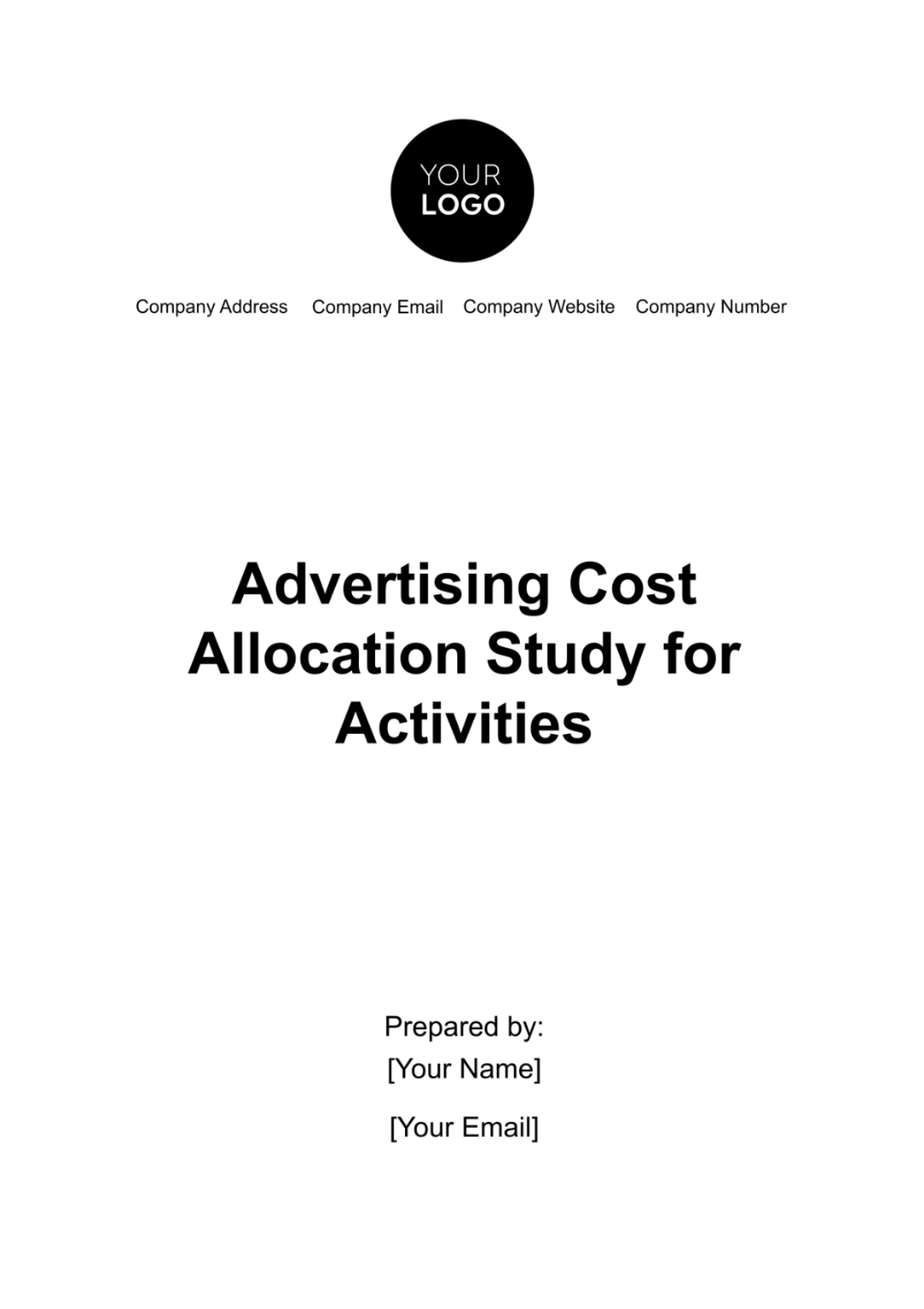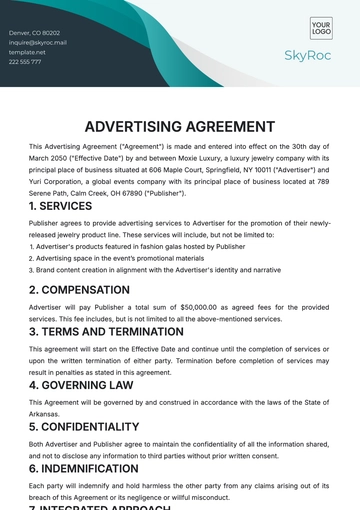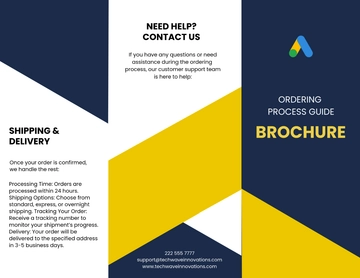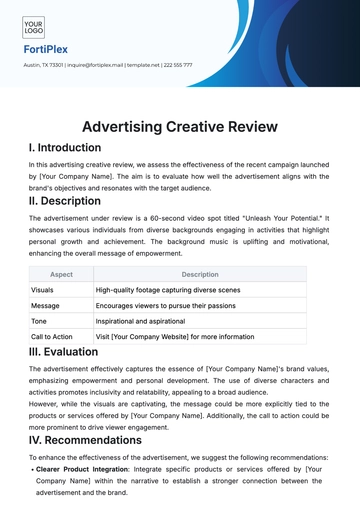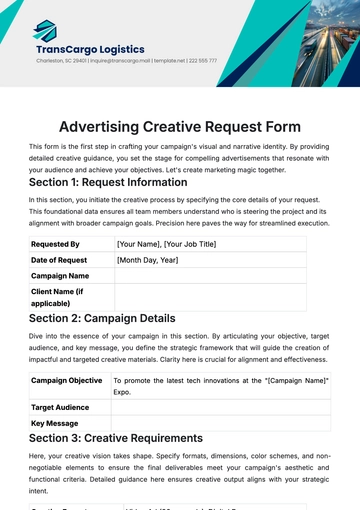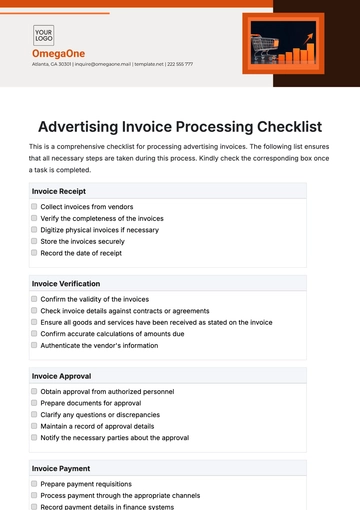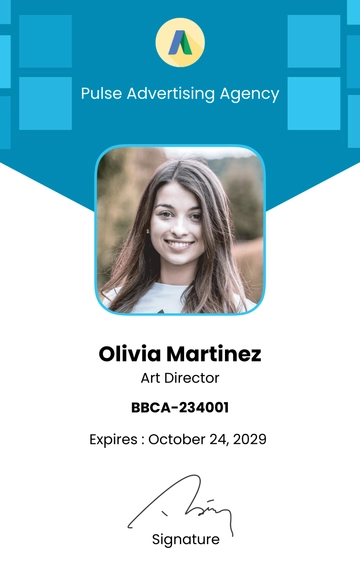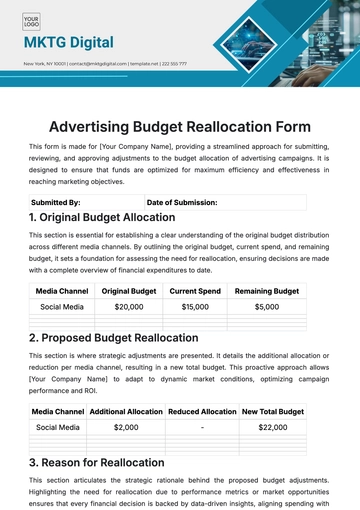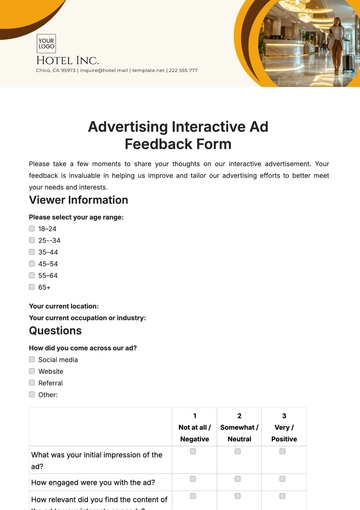Advertising Cost Allocation Study for Activities
I. Executive Summary
A. Purpose and Scope
Purpose: The Cost Allocation Study aims to provide a comprehensive view of how advertising costs are allocated across various activities at [Your Company Name].
Scope: This study covers cost allocation for digital advertising, traditional advertising, and emerging advertising channels for the fiscal year 2050. It also analyzes key performance metrics and return on investment (ROI) for each category.
B. Key Findings
Digital advertising accounts for the largest share of advertising costs, reflecting the industry trend toward online marketing.
Traditional advertising costs remain significant, indicating the continued relevance of traditional media.
Emerging advertising channels show promising ROI but require ongoing investment and optimization.
II. Introduction
A. Background and Objectives
Background: As the advertising landscape evolves, understanding the allocation of advertising costs becomes crucial for optimizing resources and maximizing ROI.
Objectives: This study aims to:
Provide transparency into cost allocation across advertising activities.
Evaluate the performance of each advertising category.
Identify opportunities for optimization and resource reallocation.
B. Study Methodology
Data collection involved expense tracking, invoice verification, and campaign analysis.
Key performance metrics, including ROI, were calculated for each activity category.
Allocation adjustments were made based on data-driven insights.
III. Advertising Activity Categories
A. Digital Advertising
Digital advertising encompasses a wide range of activities that leverage digital platforms to reach and engage with audiences. This category includes online display advertising, social media advertising, search engine marketing (SEM), and email marketing.
Allocation Amount: | Allocation for digital advertising: [$0] |
Rationale: | The significant allocation to digital advertising reflects the growing importance of online channels in reaching a diverse and digitally-connected audience. This category allows for precise targeting, real-time tracking, and data-driven optimization of ad campaigns. |
B. Traditional Advertising
Traditional advertising comprises traditional media channels that have been established for decades. This category includes television advertising, radio advertising, print media, and out-of-home advertising.
Allocation Amount: | Allocation for traditional advertising: [$0] |
Rationale: | Traditional advertising retains its relevance due to its broad reach and ability to engage with audiences across various demographics. The allocation to traditional advertising ensures a balanced approach to reaching both online and offline audiences. |
C. Emerging Advertising Channels
Emerging advertising channels represent the cutting-edge of advertising technology and innovation. This category includes Metaverse advertising, augmented reality (AR) campaigns, and neural immersive content.
Allocation Amount: | Allocation Amount: Allocation for emerging advertising: [$0] |
Rationale: | While emerging channels have a smaller allocation, they represent an exciting frontier in advertising. Investment in these channels allows [Your Company Name] to explore new ways of engaging with tech-savvy audiences and staying ahead of industry trends. |
IV. Cost Allocation Framework
A. Allocation Criteria
The allocation of costs is based on several criteria, including:
Campaign Objectives: Costs are allocated based on the specific goals of each campaign within an activity category.
Target Audience: Allocation considers the audience size and demographics, reflecting the potential reach of each campaign.
Media Buying: Costs related to media buying are allocated based on negotiated rates and the proportion of media space or time purchased.
Creative Production: Expenses related to creative development are allocated proportionally to each campaign.
Adjustments are made as necessary to ensure alignment with strategic objectives and campaign performance.
B. Allocation Period
Period: Costs are allocated for the fiscal year 2050.
Quarterly Adjustments: Emerging advertising channels undergo quarterly adjustments to accommodate the rapid evolution of these channels and the need for flexibility in resource allocation.
C. Allocation Metrics
Allocation Metrics: The allocation of costs is determined using a combination of metrics, including:
Campaign Duration: Longer campaigns receive a proportionally higher allocation.
Reach: The potential audience reach of each campaign influences allocation.
Impact: The expected impact of each campaign on brand awareness and conversions is a key factor in allocation decisions.
ROI and Performance Metrics: Historical and projected ROI and performance metrics play a crucial role in optimizing cost allocation.
V. Cost Allocation by Activity
A. Digital Advertising Costs
Table 5.1: Digital Advertising Cost Allocation
Expense Category | Allocation (USD) |
|---|
Social Media Advertising | [$0] |
| |
| |
B. Traditional Advertising Costs
Table 5.2: Traditional Advertising Cost Allocation
Expense Category | Allocation (USD) |
|---|
Television Advertising | [$0] |
| |
| |
C. Emerging Advertising Costs
Table 5.3: Emerging Advertising Cost Allocation
Expense Category | Allocation (USD) |
|---|
Metaverse Advertising | [$0] |
| |
| |
VI. Performance Metrics and ROI
A. Key Metrics by Activity
Table 6.1: Key Performance Metrics by Activity
Activity | Key Metrics |
|---|
Digital Advertising | CTR, Conversion Rate, ROI |
| |
| |
B. ROI Analysis
Digital Advertising ROI: Digital advertising demonstrates a strong ROI due to its precise targeting capabilities. The allocation of $5,000,000 to digital advertising is expected to yield a significant return on investment. Key performance metrics, including click-through rates (CTR), conversion rates, and ROI, will be closely monitored and used to optimize allocation further.
Traditional Advertising ROI: Traditional advertising maintains its ROI through broad reach and established audience engagement. The allocation of $3,500,000 to traditional advertising reflects the continuing effectiveness of these channels. Performance metrics, such as reach and frequency, will be analyzed to ensure ROI goals are met.
Emerging Advertising Channels ROI: Emerging advertising channels represent an exciting opportunity. While the allocation of $1,500,000 is smaller, these channels show promise in terms of engagement and personalization. The ROI for emerging channels will be closely monitored, and adjustments will be made as these channels mature.
VII. Allocation Optimization
A. Data-Driven Adjustments
Allocation adjustments are made quarterly based on real-time campaign performance data. This data-driven approach allows for quick reallocation of resources to campaigns that are demonstrating higher ROI or potential for optimization.
B. Resource Reallocation
Resources are redirected to emerging advertising channels with proven ROI potential. Ongoing monitoring ensures that [Your Company Name] can adapt to changing market dynamics and seize new opportunities as they arise.
Conclusion
The Cost Allocation Study for Advertising Activities at [Your Company Name] provides valuable insights into how costs are distributed across digital, traditional, and emerging advertising channels. This study demonstrates our commitment to data-driven decision-making, optimization, and transparency in advertising budget management. Continuous monitoring and adjustment of allocations will enable us to adapt to evolving market dynamics and maximize ROI in the ever-changing advertising landscape.
[Your Company Name] remains dedicated to optimizing advertising resources to achieve the highest return on investment and meet our strategic objectives in the year [2050].
Advertising Templates @ Template.net
